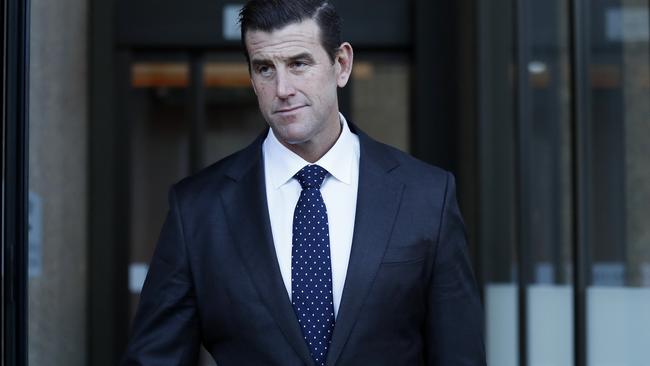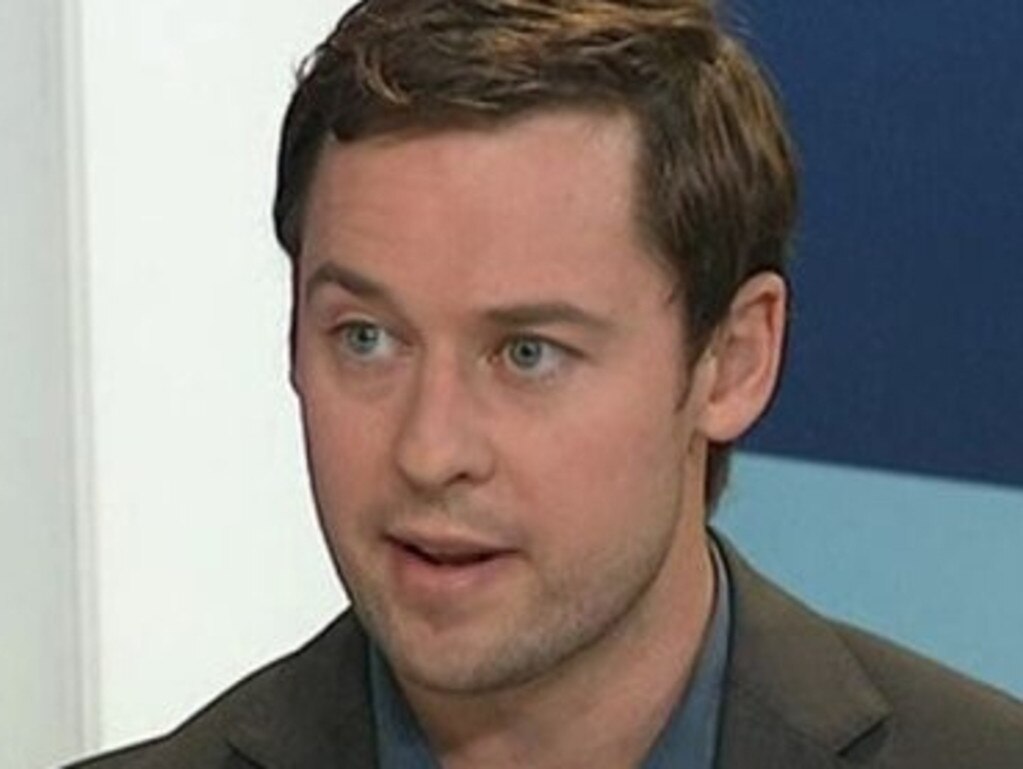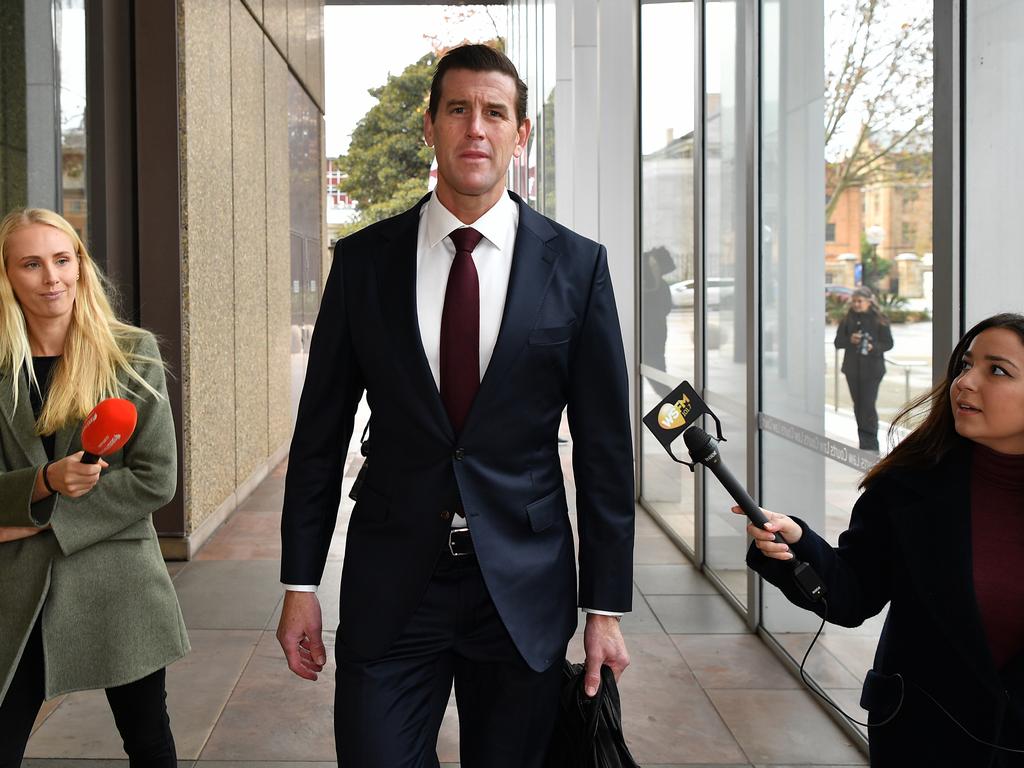Ben Roberts-Smith defamation case: Elite soldiers ‘covered up’ cliff execution, court told
Ben Roberts-Smith conspired with two soldiers to ‘cover up’ the murder of a handcuffed man with an invented story, a court has heard.

War hero Ben Roberts-Smith conspired with two special forces soldiers in an effort to cover up the murder of a handcuffed man by “inventing” a story about an ambush in an Afghan cornfield, a court has heard.
Mr Roberts-Smith, 42, is suing The Sydney Morning Herald, The Age and The Canberra Times, now under separate ownership, over reports published in 2018 that alleged he committed murder during deployments to Afghanistan. He denies the allegations and says the reports portray him as a murderous war criminal.
On the second day of his cross-examination in the Federal Court by barrister Nicholas Owens, SC, for Nine newspapers, Mr Roberts-Smith was questioned in detail about key events surrounding Nine’s “centrepiece” allegation – the murder of unarmed civilian Ali Jan in Darwan, Uruzgan province, on September 11, 2012.
As part of its truth defence, the newspapers allege that Mr Roberts-Smith committed or was complicit in six unlawful killings in Afghanistan, including the murder of Jan. They allege the farmer was kicked off a cliff while handcuffed and then shot dead by Australian soldiers in the village of Darwan in 2012.
Mr Owens suggested the war hero had kicked a PUC – an acronym for persons under the control of Australian soldiers – in the chest and “over the cliff” after the man twice laughed at him.
He told the court that Mr Roberts-Smith proceeded to walk down the cliff with person 11 and that they “both observed” that the man “was very seriously injured around the mouth.” It was at this point, Mr Owens submitted, that the Victoria Cross recipient and two other soldiers agreed to execute the man.
“You and person 11 dragged him into a cornfield and either you or person 11 shot him,” Mr Owens said. “That’s completely false,” Mr Roberts-Smith replied.
Mr Owens showed the Victoria Cross recipient a photo of the man’s body with four bullet wounds, an “open gaping wound in his chest”, an injury around the man’s mouth, and injuries “consistent” with being handcuffed.
Mr Owens asked: “When this man was shot, his arms were handcuffed behind his back, weren’t they?” “No, they weren’t,” Mr Roberts-Smith said. “You, person 4 and person 11 all discussed how to cover up the killing, correct?” “That’s false,” Mr Roberts-Smith replied.
Last week, Bruce McClintock, SC, for Mr Roberts-Smith dismissed the outlets’ “centrepiece” allegation – the murder of Jan on September 11, 2012 – as a “ludicrous” accusation that “did not happen”. Asked by Mr McClintock about the allegation, Mr Roberts-Smith said: “Every time I have to read that or hear it, I can’t believe it has been written. It feels like a nightmare, to be frank.”
The court has heard that the rules of war – as outlined in the Geneva Convention and the Australian Defence Force’s rules of engagement – ban the killing of persons under the control of Australian soldiers.
On the ninth day of the defamation case, the war hero was also accused of lying in the witness box after he said he had made a mistake in his evidence about the killing of an Afghan man with a prosthetic leg.
On Thursday, Mr Roberts-Smith told the court he dragged the man he killed back to the compound wall while the second SAS operator dragged the second insurgent. However, on Friday he said he’d realised his evidence had been wrong – the second soldier did not move the second insurgent’s body.
“He lay where he fell,” Mr Roberts-Smith said. “It was a mistake in my evidence I felt I should correct.”
Mr Roberts-Smith told the court he was involved in over “300 missions” across six deployments to Afghanistan and that “sometimes you mix it up”.
“You find it hard to keep your story straight, don’t, you?” Mr Owens asked. “No,” Mr Roberts-Smith replied. Mr Owens later asked: “You’ve thrown this man on the ground and then rolled him over and shot him, correct?” “No,” Mr Roberts-Smith replied.
At one point, Mr Roberts-Smith accused the barrister of peddling a “fanciful story.”
“You would not pick someone up and put yourself in danger like that, it’s a ridiculous story.”
Mr Roberts-Smith is also suing over reports alleging he assaulted a woman – a key witness in the defamation proceedings – at a Canberra hotel in March 2018.
A substantial part of Mr Roberts-Smith’s cross-examination is expected to be held behind closed doors on Monday to ensure national security information is not divulged in open court.
The hearing continues.






